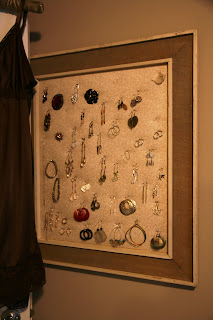Has anyone noticed how dang expensive the boxes of store-bought broth/stock are getting? Especially if you want the organic and/or low sodium kind. Almost $4 for only 4 cups! I love making soups, especially in the fall and winter, and every single time I use home-made stock the soup turns out a gazillion times better. (For those not able to quantify "gazillion", it's a lot.) Home-made is so much richer, flavorful, and not loaded with sodium and preservatives and all sorts of other diet and health saboteurs. Sure, it's time consuming and sort of a hassle. But if you make it on a day when you're home doing laundry, cleaning house, baking things, or [insert favorite back-aching chore here] it's really not that much extra time out of our crazy crazy schedules. And it has the bonus effect of making me feel all Martha and competent in the kitchen.
I don't think I've ever made stock the same way twice, but here is the gist of it.
Ingredients:
- Meat bones of your choice. I tend to save up all sorts of chicken bits in the freezer until I have time to make stock. If you use the skin and such, your broth will be more oily/fatty. I only do this on occasion.
- Something acidic, like lemon juice or lime juice.
- Garlic
- Onion
- Carrots or any other veggies (except for green veggies) that you want to add.
- Spices, if you like
- Water
Equipment:
- Stock/soup pot
- Strainer
- Containers for storing the stock
1) Fill a giant stock or soup pot with water. Heat up and add bones/meat/skins. Bring to a boil, then turn down the heat and let simmer for awhile. Like 2 hours, or until you have a break from folding laundry or picking up after your family. Stir occasionally. I also add a couple tablespoons of lemon juice. I read somewhere that it helps leach the minerals and good stuff from the bones. I have no idea if it's true, but I figure it can't hurt.
2) Add in roughly chopped garlic. I tend to like overly-garlicky foods, so I add about 6 cloves. Add or subtract to your taste. Also 2-3 yellow onions, roughly chopped as well (skins removed). Again, add to suit your taste of flavoring. I let simmer for a while longer.
3) Add in chunks of veggies. For this batch I only added carrots. Don't add celery or other green veggies until the last hour or so, because it will make your stock bitter. Also add in the spices (pepper, salt, whatever you're into). I usually don't add much other than pepper, because it really depends on what I'll be using the stock for. I prefer to add it in when I'm using it for cooking.
4) Let simmer for another long while. Sometimes I let it go overnight, or even through an entire weekend if I'm going to be home often enough to keep an eye on it. Every so often, it will start to cook down and look like this. Try not to let it get any more cooked down than this, because you will start to burn things.
5) Add water until it looks like this again.
6) Repeat as many times as you have time for. The longer you let your stock simmer, the richer and yummier it will be. Just don't forget to keep checking on it! If you let it go overnight, make sure you are getting up every couple of hours to stir/add water. It's a great project for insomniacs!
8) When you are ready to wrap things up, place a strainer over a separate pot or some other container. Ladle or pour (I ladle, because I am clumsy) into the strainer in small amounts. Use a wooden spoon to smoosh (LOVE that word!) all the juices through the strainer. Dump the solids into the garbage. Repeat until you're done straining all of the stock.
9) I let it sit and cool for awhile, and then skim the extra fat off the top. Then I pre-measure it into tupperware and pop into the freezer until it's needed!





















































